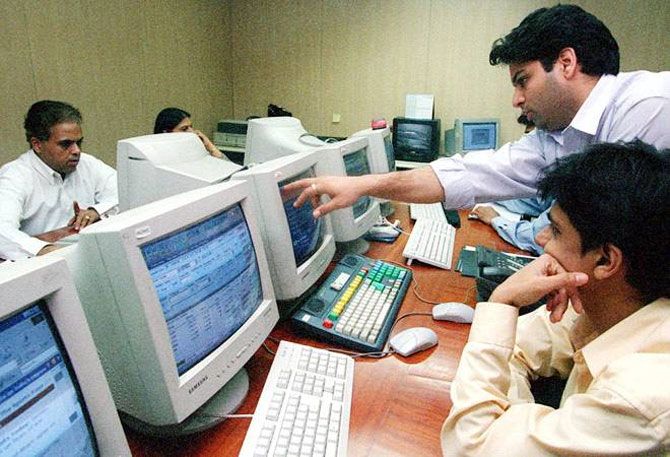
With the Reserve Bank of India (RBI) stressing the government’s onus to maintain fiscal prudence in the coming Union Budget proposals, Dhawal Dalal, executive vice-president & head, fixed income, DSP BlackRock Investment Managers, tells Puneet Wadhwa, bottom, left, he expects the central bank to hold rates for the rest of calendar year 2016. “We’re asking investors to consider fixed income schemes that have average maturity between one and five years,” he says. Excerpts:
Why the sudden disconnect between global bond markets and India? Could we expect a rally in Indian bonds this year?
Government bond yields in India have remained sticky, as local market participants might be focussing on near-term events such as Union Budget for FY17, demand and supply dynamics in the bond market as well as FII (foreign institutional investor) fund flows and their impact on the emerging markets (EMs).
 A section of market participants believe the fiscal deficit for FY17 might be revised higher than the projected 3.5 per cent of GDP (gross domestic product). This could lead to higher government borrowing in FY17.
A section of market participants believe the fiscal deficit for FY17 might be revised higher than the projected 3.5 per cent of GDP (gross domestic product). This could lead to higher government borrowing in FY17.
Moreover, a potential increase in the supply from state development loans (SDLs) and bonds linked to government’s Uday (Ujwal Discom Assurance Yojana) scheme could result in relatively higher supply of bonds in the market. As a result, a potential mismatch in demand-supply dynamics in the bond market could keep the long end of the yield curve elevated in the medium term.
Having said that, we believe government bond prices could stage a smart rally if the government maintains the projected fiscal deficit target for FY17 and the Reserve Bank of India (RBI) follows up with the repo rate reduction in its April (monetary) policy (review).
Some normalisation on the global economic landscape and a normal monsoon could also lift economic growth prospects and improve sentiment of market participants in the second-quarter of calendar year 2016 (CY16).
What is your interpretation of the recent monetary policy review?
RBI has maintained an accommodative bias. We believe the recent decline in oil prices might have given sufficient headroom to RBI to reduce the repo rate further, if required. If the coming Union Budget outlines a fiscal deficit path that is not too divergent from what the RBI has in mind, the central bank might reciprocate with a reduction in the repo rates in the April policy review.
We expect the RBI to remain on a long hold for the rest of the year, unless there is a dramatic fall in inflationary expectations. We expect consumer inflation to average around five per cent in 2016 at current crude oil price of around $30 per barrel.
What if the Budget doesn’t stick to the fiscal deficit target?
We must view the recent fiscal challenges in the global context. The economic growth in major economies appears to be slowing. Inflationary pressures are below their target levels, due to lower energy costs. The world has aggregate surplus capacities, which is creating slack in the manufacturing sector.
Moreover, we have observed both consumers and the banking system are in the process of deleveraging. In India, private sector capital expenditure is on the wane. In that context, if the government wants to step up expenditure as a measure of counter-cyclical growth policy, we don’t expect it will have any adverse impact on inflation in the current environment.
Do you see the rupee hitting the 75-mark against the US dollar?
If the dollar remains relatively strong against G7 (Group of seven) currencies, which is our base case scenario, it will put downward pressure on the emerging markets currencies, including the rupee.
As regards the rupee, India’s imports and exports have been on a declining trend, which may be symptomatic of a declining trend in aggregate demand and global trade balance in the rest of the world. Based on that, we expect the rupee to exhibit a declining trend against the dollar.
Based on our understanding of the recent development in global macro-economic landscape, we believe it is unlikely for the rupee to cross the 75 mark against the US dollar in the near-term unless there is a sudden and large-scale exodus of FIIs from Indian financial markets.
With interest rates on the decline, what percentage of one’s portfolio can an investor allocate to debt, and which category of debt schemes would you advise new investors?
We are asking investors to consider fixed income schemes that have average maturity between one and five years. We believe that the short-and medium-end offers relative value. Having said that, if we get a normal monsoon and the recent volatility in global financial markets subside, there could be a smart rally in the long-end of the government bond yield curve.











